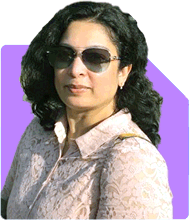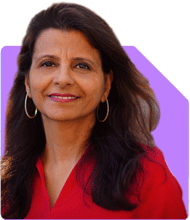Roopashree Sharma | Answer |Ask -Follow
Yoga, Naturopathy Expert - Answered on Oct 21, 2022
She has completed her diploma in naturopathic medicine/naturopathy from DY Patil University and her advanced diploma in yoga teacher training/yoga therapy from the university of Mumbai.... more

I am a college-going young girl. Of late, I am facing a very bad hair fall problem. I have been trying many home remedies, but all in vain. Can you suggest me dietary changes to tackle the situation?
Shruti
Hairfall could be a result of multiple reasons, ranging from hormonal changes to lack of nutrition.
If it’s sudden and constant, you can get a routine body check up done.
You should ensure a healthy and nutritional diet with more fresh vegetables and greens; continue taking external care like oiling once a week to enhance growth.
Comb your hair before sleeping for better circulation. You can use a neem comb as it is antiseptic; choose one with smooth edges.
Exercising is equally important for better blood circulation as well as balancing hormones.
Lastly, don’t overstress about your hair loss.
Start doing relaxing pranayams like Anulom Vilom for 10-20 minutes every morning or before going to bed.
You may like to see similar questions and answers below
Roopashree Sharma | Answer |Ask -Follow
Yoga, Naturopathy Expert - Answered on May 24, 2022
Komal Jethmalani | Answer |Ask -Follow
Dietician, Diabetes Expert - Answered on Oct 27, 2020
Roopashree Sharma | Answer |Ask -Follow
Yoga, Naturopathy Expert - Answered on Sep 21, 2022
Komal Jethmalani | Answer |Ask -Follow
Dietician, Diabetes Expert - Answered on Dec 06, 2024
Dr Dipankar Dutta |1841 Answers |Ask -Follow
Tech Careers and Skill Development Expert - Answered on Dec 14, 2025
Nayagam P P |10854 Answers |Ask -Follow
Career Counsellor - Answered on Dec 14, 2025
Radheshyam Zanwar |6744 Answers |Ask -Follow
MHT-CET, IIT-JEE, NEET-UG Expert - Answered on Dec 14, 2025
Radheshyam Zanwar |6744 Answers |Ask -Follow
MHT-CET, IIT-JEE, NEET-UG Expert - Answered on Dec 14, 2025
Dr Dipankar Dutta |1841 Answers |Ask -Follow
Tech Careers and Skill Development Expert - Answered on Dec 14, 2025
Dr Dipankar Dutta |1841 Answers |Ask -Follow
Tech Careers and Skill Development Expert - Answered on Dec 13, 2025
Dr Dipankar Dutta |1841 Answers |Ask -Follow
Tech Careers and Skill Development Expert - Answered on Dec 13, 2025
Mayank Chandel |2575 Answers |Ask -Follow
IIT-JEE, NEET-UG, SAT, CLAT, CA, CS Exam Expert - Answered on Dec 13, 2025
Radheshyam Zanwar |6744 Answers |Ask -Follow
MHT-CET, IIT-JEE, NEET-UG Expert - Answered on Dec 13, 2025
Mayank Chandel |2575 Answers |Ask -Follow
IIT-JEE, NEET-UG, SAT, CLAT, CA, CS Exam Expert - Answered on Dec 13, 2025























